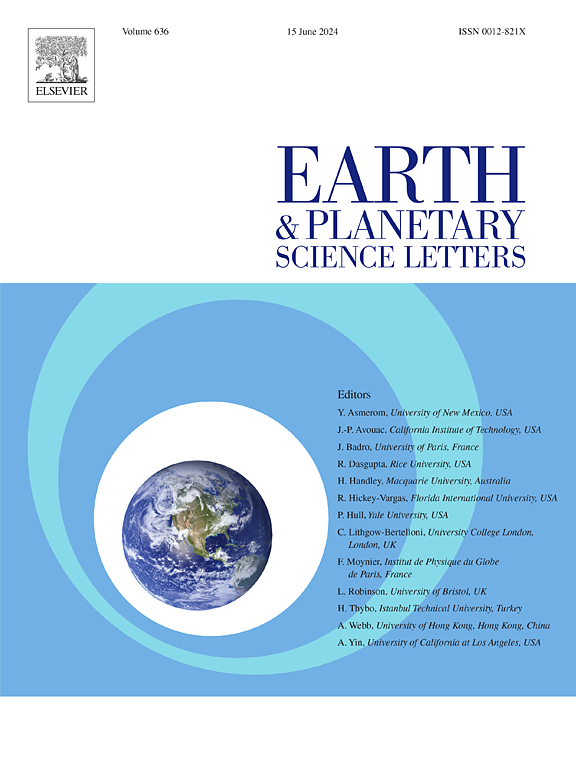Duration of isobaric heating and slab rollback in the Aegean extensional province, Eastern Mediterranean: Evidence from garnet diffusion modelling
IF 4.8
1区 地球科学
Q1 GEOCHEMISTRY & GEOPHYSICS
引用次数: 0
Abstract
A phase of isobaric heating during exhumation of high-pressure rocks is often reported, but the tectonic significance of isobaric heating remains uncertain. Constraining the timescales of isobaric heating is essential for connecting the heating to tectonic processes of lithospheric thickening and extension. An isobaric heating phase has been reported for the Cycladic Blueschist Unit in the Hellenide orogen of Greece. We present diffusion modeling of major elements in garnet using data from Naxos Island to provide new independent estimates of the duration of isobaric heating. We also present radioactive trace element analyses of the Cycladic basement and a heat conduction model to explore the heat production generated in the basement and its influence on isobaric heating. Our model indicates that isobaric heating occurred over ∼9.7 Myr, during which the Cycladic basement generated enough heat to explain the observed temperature increase. At the end of this heating phase, the temperature increase caused a significant drop in crustal strength, which controlled the style of crustal extensional deformation during subsequent rollback of the subducting slab. Our work implies that the underthrusting of radiogenic material in convergent settings produces sufficient heat to significantly increase temperature which weakens the crust and enables pervasive deformation.
地中海东部爱琴海伸展省等压加热和板块回滚的持续时间:来自石榴石扩散模拟的证据
高压岩石发掘过程中常出现等压加热阶段,但等压加热的构造意义尚不确定。限定等压加热的时间尺度是将等压加热与岩石圈增厚和伸展的构造过程联系起来的必要条件。希腊Hellenide造山带基克拉迪蓝片岩单元存在等压加热期。我们利用纳克索斯岛的数据提出了石榴石中主要元素的扩散模型,以提供对等压加热持续时间的新的独立估计。我们还提出了基克拉迪基底的放射性微量元素分析和热传导模型,以探讨基底产生的热量及其对等压加热的影响。我们的模型表明等压加热发生在~ 9.7 Myr,在此期间基克拉迪基底产生了足够的热量来解释观测到的温度升高。在该加热阶段结束时,温度升高导致地壳强度显著下降,控制了俯冲板块后续回滚过程中地壳伸展变形的样式。我们的工作表明,在会聚环境中,放射性物质的逆冲产生足够的热量,从而显著提高温度,从而削弱地壳并使普遍变形成为可能。
本文章由计算机程序翻译,如有差异,请以英文原文为准。
求助全文
约1分钟内获得全文
求助全文
来源期刊

Earth and Planetary Science Letters
地学-地球化学与地球物理
CiteScore
10.30
自引率
5.70%
发文量
475
审稿时长
2.8 months
期刊介绍:
Earth and Planetary Science Letters (EPSL) is a leading journal for researchers across the entire Earth and planetary sciences community. It publishes concise, exciting, high-impact articles ("Letters") of broad interest. Its focus is on physical and chemical processes, the evolution and general properties of the Earth and planets - from their deep interiors to their atmospheres. EPSL also includes a Frontiers section, featuring invited high-profile synthesis articles by leading experts on timely topics to bring cutting-edge research to the wider community.
 求助内容:
求助内容: 应助结果提醒方式:
应助结果提醒方式:


